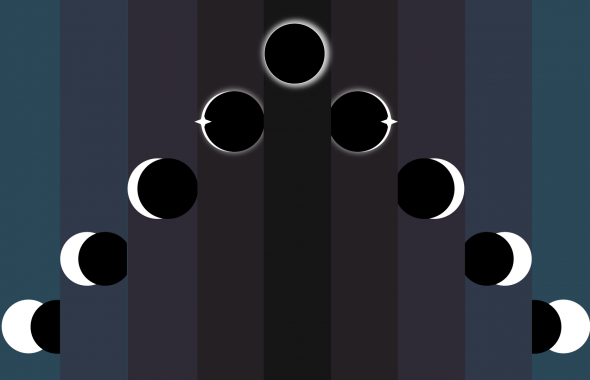The 23rd letter of the English alphabet is a bit of a wonder. The humble W is the only letter of the alphabet with a three-syllable name. It is also one of three letters (H, W, and Y) with a name that does not indicate its phonetic use. The complications of W are twofold because of its name, double-u, and its shape, double V.
What sound does W represent?
OK, we’re going to get a little technical—and very phonological—here. In English, the letter W represents a sound that is a voiced bilabial-velar glide. To make the W sound, you have to round both lips (bilabial) and raise the back of the tongue (velar). Voiced means the vocal cords vibrate while making a sound, and a glide is a speech sound that has characteristics of both a vowel and consonant.
But, in other languages, the letter W makes different sounds. In German, a W is pronounced like an English V. In Welsh, W is a vowel, making a U-type sound found in such loanwords as cwm.
If you enjoy this history, you’ll love to meet two extinct letters of the alphabet.
What does the letter U have to do with it?
The English alphabet, if you want to sing along with us, has 26 letters. Added just ahead of J and V, W was the 24th to join this tuneful set. Now, the English alphabet is based on the Latin alphabet, which did not have this trio of J, V, and W. J came from I, and V and W, from U.
In Latin, U represented a W sound, which could only occur before a vowel. Consider equus, “horse,” pronounced like [ ek-woos ]. You see that literal double U, that UU, and how it is associated with our W sound?
While the W disappeared from much of Latin pronunciation as it evolved into the Romance languages, one influential variety of French, Norman French, did have a W sound, especially as a result of the Germanic words that flooded the language from Viking incursions into northern France. And Germanic languages love a W. So, Norman French used a double U to represent W sounds in words.
(This history explains pairs like warranty/guarantee, but we’ll save that story for a different time.)
Meanwhile in Anglo-Saxon England … Old English used the Latin alphabet, but with some twists, including a letter wynn. It was a character (ƿ) representing the sound (w) in Old English and early Middle English manuscripts, based on a rune with the same phonetic value.
But why is W so V-shaped?
The printing press came to English in 1476, and it used a single double-U block, helping cement W as its own letter by the early 1500s. As the printing press evolved, so did the shape of the letters.
But then a double-V shape came into favor (in part because of ancient Roman inscriptions), yielding VV for W, and over time, those VV‘s became written as a one, continuous shape.
And now we have W. The rest is … XYZ.
Interested in more alphabet history? Read about “Why Was Z Removed From The Alphabet (And Then Put Back)?“














